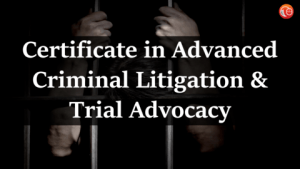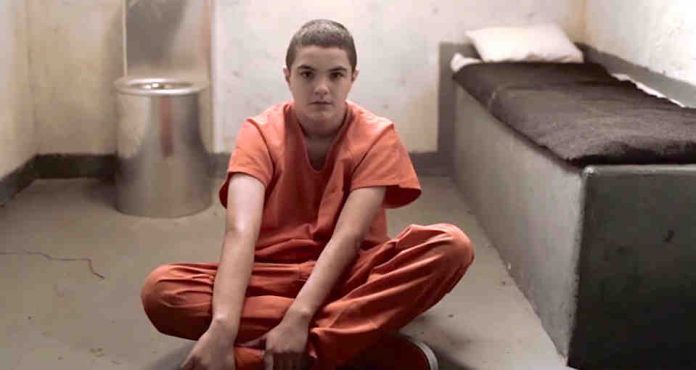This article has been written by Hrithik Maji, Certificate Course in Advanced Criminal Litigation & Trial Advocacy pursuing from LawSikho.
Table of Contents
Introduction
Juvenile delinquent refers to a person, who is below the age of 18 who committed a crime. Like other developed nations Juvenile delinquency is a serious problem in the United States. According to a report in the United States, 2.1 million youth who are under the age of 18 are arrested for juvenile crime. Though overall rates have been reducing over the past few years and approximately 1.7 million delinquency cases are disposed of in juvenile courts.
History of the juvenile justice system in United States
During the progressive era of 1880-1920 in an urban area, a large no. of people increased. As a result of this dramatic increase in those areas, many indigent children wandered in the streets. Some of them become involved in criminal activity. Initially, those convicted children were sent to the same jail as adults but soon lawmakers and social activists realized that those jails were nothing but to train them for careers in criminality. To avoid those negative influences, separate institutions for children were developed. Early days juvenile institutions were based on the English Bridwell institutions. Those institutions were used for teaching life and trade skills. The aim behind this was to teach how to survive in society after being released from juvenile institutions. Later some other types of institutions emerged in the United States.
- House of refuge
- New reformatories
- Separate institution for juvenile females.
Houses of refuge aimed at the reduction of youth and used indeterminate sentencing, religious activity, and apprenticeships in various trades. The houses were governed like a military model to improve order and discipline, but the houses were often congested and youth were overworked.
New reformatories, established in the late 1800s, were cottages and foster residences that were often placed on farms. The family-type institutions were prevalent, and hard physical labor were stressed. New reformatories suffered from the same types of problems that houses of refuge did. Different juvenile institutions for girls evolved in the mid-1880s, and these concentrated on teaching household and child-rearing skills to girls.
Evolution of juvenile courts
In 1944 in Prince v. Massachusetts for the first time, juvenile courts were regulated under the doctrine of”parens patriae”. This suggests the state could act as a parent. and juvenile courts have the power to intervene whenever court officials felt the intervention was in the favorable interests of the juvenile. Any offense committed was secondary to the offender. parens patriae was planned to deal with youth committing criminal acts, the discretion of this philosophy became increasingly broader and was constantly debated in court. Several pivotal cases ensued which helped the juvenile justice system evolve. Previously juveniles did not have the same rights as adults in court proceedings. A narrower range of rights was provided to them and few constitutional rights applied to them. Now it’s started to change. The rights of a juvenile vary from state to state while U.S Supreme Court has ruled some rights in In re Gault, 387 U.S. 1, which must be followed by every state.
Rights of a juvenile
Probable cause
An officer who wants to search or arrest a child for violating such an act must have probable cause. If he doesn’t have any probable cause, constitutionally he is not competent to search or arrest the child. Even in court proceedings, it plays an important role. For juvenile offenders a probable cause hearing needs to be conducted within fifteen days from the date of the first appearance. The probable cause hearing allows the juvenile to assess the strength of the State’s case, to question the sufficiency of the evidence, and to find out the evidence for the adjudicatory hearing if probable cause is established. If there is no discovery of the probable cause, the application must be rejected.
Right to a phone call
The right to a phone call is another constitutional right for the juvenile accused. As per Miranda rights, a police officer is bound to allow the children to call their parents or attorney while he is in custody. If such authority did not allow him or her to do that, anything he or she will say to the police officer will not be admissible in court.
Right to attorney
Right to attorney added in the U.S constitution through the sixth amendment. As per the sixth amendment, every accused shall be present before the court through his attorney in every stage of the trial. It also provides that if any accused can’t afford an attorney, the government will appoint one attorney for him without any fee.
Right to notice of charges
Another constitutional right for a juvenile is to serve him or her a notice of delinquency act. As per In re Gault’s decision, the authority is bound to provide him with a notice. If the authority didn’t provide him or her any notice of charges then the accused statement will not be admissible in court.
Right to confront and cross-examination
The person who is accused of an offense has the right to confront and cross-examine the witness. Though juvenile court proceedings are different from adult court proceedings a juvenile can take privileges of this clause. The right to confront is found in the sixth amendment. As per the confront clause “in all criminal trials, the accused shall enjoy the right…to be confronted with the witnesses against him.”The Clause was aimed at deterring the conviction of a defendant upon written evidence (such as depositions or ex parte affidavits) without that defendant had a chance to face his or her accusers and to put their innocence and truthfulness to test before the jury.
In Mattox v. the United States, the Supreme Court held three essential objectives that the Confrontation Clause was meant to serve:
- To assure that witnesses would verify under oath and appreciate the serious nature of the trial process;
- To permit the accused to cross-examine witnesses who testify against him; and
- To allow jurors to assess the credibility of a witness by examining that witness’s behavior.
In Lee v. Illinois, the Court held that the Confrontation Clause is one of the important constitutional shelters to improve fairness in the criminal justice system.
The privileges against self-incrimination
Juveniles in court proceedings have the privilege to proclaim their Fifth Amendment right against self-incrimination. This tells that a minor cannot be forced to testify against him or herself.
No right to a jury trial
Most nations do not permit jury trials in juvenile delinquency cases. The few nations that do permit jury trials often restrict them to only specific cases.
The right to have charges prove beyond reasonable doubt
The U.S. Supreme Court has ordered that if a juvenile faces imprisonment or adjudication as “delinquent” as a result of juvenile court proceedings, then the state must confirm the charges against the minor “beyond a reasonable doubt.” If those penalties are not an issue, the state need only prove the charges by a “preponderance of evidence” standard. 
Difference between juvenile system and adult system
The philosophy behind the system
The juvenile justice system tries to rehabilitate and help juvenile offenders to build their lives again and help them to move away from criminal activity. On the other hand, the adult system directs more on punishment and the assumption that you should have known better than to commit a crime. It often overlooks the chance for rehabilitation and focuses on how to hold you responsible for your actions.
Crimes and delinquent act
Adults are charged for “committing crimes” while minors are charged for committing “delinquent acts.” If the delinquent acts are very severe, such as extreme crimes of violence such as murder, the court system may agree to charge the juvenile as an adult, in which case they would be tried in the adult criminal system.
Records and privacy
The juvenile justice system provides you with extra secrecy. The court makes boundaries for who can enter to see your records. Other adult court records, however, are accessible publicly. People can even come to watch your court proceedings if they want.
Holistic approach
In juvenile court, the magistrate will look at many aspects of you. This might include your household life, how you do in the academy, and any problems you may have. The method is to take a well-rounded look at you and what led you to court to seek out an outcome that will assure you do not come in court furthermore. In adult court, the magistrate only observes the legal aspects and facts of the case. While you may bring in outside factors to your defense, the court mainly looks at the legal aspects when making a judgment.
The United States Criminal Justice System and International Law
On the Rights of the Child the United Nations Convention, adopted in 1989, and the Rome Statute of the International Criminal Court, approved in 1998, have had a tremendous effect on the laws of many nations regarding juvenile justice. Their impact in the United States, however, appears to have been less. The United States is not significant to either of these actions and while American critics harshly condemn the reluctance of government officials in the United States to concentrate on these signed agreements, the statutes developed under the Rome Statute and the Convention appear to be referred to rarely in American courts. To be sure, limited cases can be found in which a United States judge substantively depended on these international treaties to resolve important cases in juvenile justice matters.
Magistrates in the United States do not, though, completely avoid these covenants. Few courts here have talked about them and, presumably, have been somewhat influenced by them as instruments reflecting customary international law. Still, American courts either adopt them only on peripherally related matters or conclude that because the United States has not ratified the actions, they are not binding on United States courts in either federal or state jurisdictions.
Conclusion
Youths are the valuable asset of every nation and every nation must ensure that they have a safe environment to live in. For that reason, most nations around the globe do not treat juvenile criminals the same way they treat adult criminals. This is because teenagers below a specific age (that varies from nation to nation )are said to not have the mental maturity to fully realize the outcomes of what they are committing. It is deemed premature, excessive, and unfair to sentence the juvenile to imprisonment without parole as the juvenile may very well be rehabilitated. Since the age for mental maturity cannot be defined accurately, many nations have drafted their laws so that in cases of very severe offenses committed by minors they can still be tried like the adult’s system.
Depending on how the statutes of the nation are drafted and the role the media plays, public opinion becomes a crucial factor in determining the sentence for the juvenile. The most effective way is the Norwegian way; however, not all societies are developed. Many societies would prefer the deaths of their loved ones avenged and the only way to achieve that, while maintaining law and order, is to impose a strict penalty. The issue is whether the juvenile should be penalized or whether he should be rehabilitated. The answer to the issue lies in where the crime has been committed, the perceived maturity of the juvenile in that community, and the public opinion.
References
Students of Lawsikho courses regularly produce writing assignments and work on practical exercises as a part of their coursework and develop themselves in real-life practical skills.
LawSikho has created a telegram group for exchanging legal knowledge, referrals, and various opportunities. You can click on this link and join:











